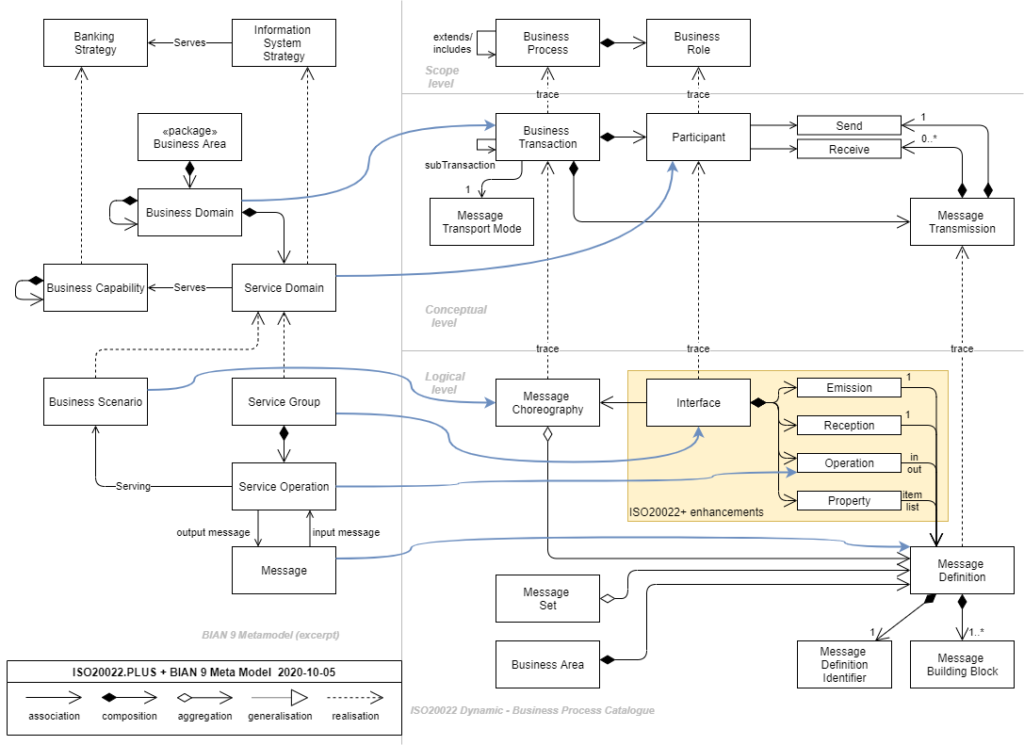BIAN
A brief independent overview of the BIAN 9 to ISO20022+ relationship.

BIAN Service Landscape 9 defines a Service Oriented Architecture (SOA) for core banking, with consistent reuse of patterns for the naming and composition of service operations for each business domain. It extends the ISO20022 metamodel to support the definition of services for each domain, and relates them to business goals, strategies and capabilities. BIAN seeks to reuse registered data types where feasible, and adds many of its own.
It’s easiest to explain the model from the concrete to the abstract.
A BIAN Message corresponds with an ISO20022 Message Definition.
A BIAN Service Operation corresponds with an ISO20022+ Operation
and a BIAN Service Group with an ISO20022+ Interface.
Each BIAN Business Scenario is an ISO20022 Message Choreography.
A BIAN Business Area is simply a package to group related BIAN Business Domains which correspond with ISO20022 Busines Transactions.
Now, because we’re using SOA, each Business Transaction comprises Participants that use or provide services in a request response style.
So each BIAN Service Domain corresponds with a ISO20022 Participant providing a service. Note that the BIAN API Catalogue publishes an API per Service Domain, which brings all the Service Group Interfaces together.
BIAN also models pre and post Conditions for Business Scenarios and Service Operations, which correspond with ISO 20022 Constraints.
Whereas ISO20022 aims to model communication, BIAN’s “Business Object Layer will be the foundation for an Enterprise Wide Information Model.”
Business Objects correspond with ISO20022 Message Component Types.
These types are used by components of BIAN’s Business Information layer which includes Messages, Asset Types, Control Records, Behaviour Qualifiers, Analytics Objects and Generic Artifacts.